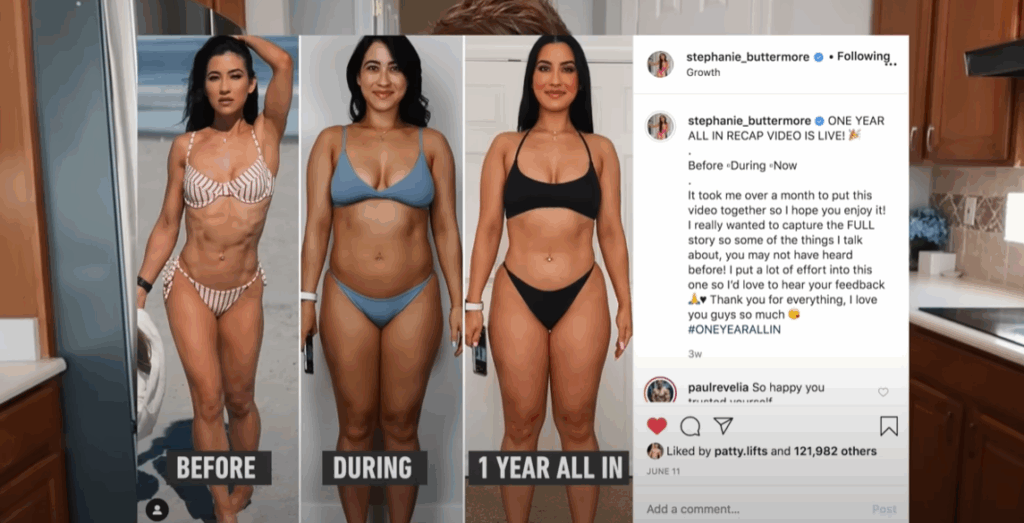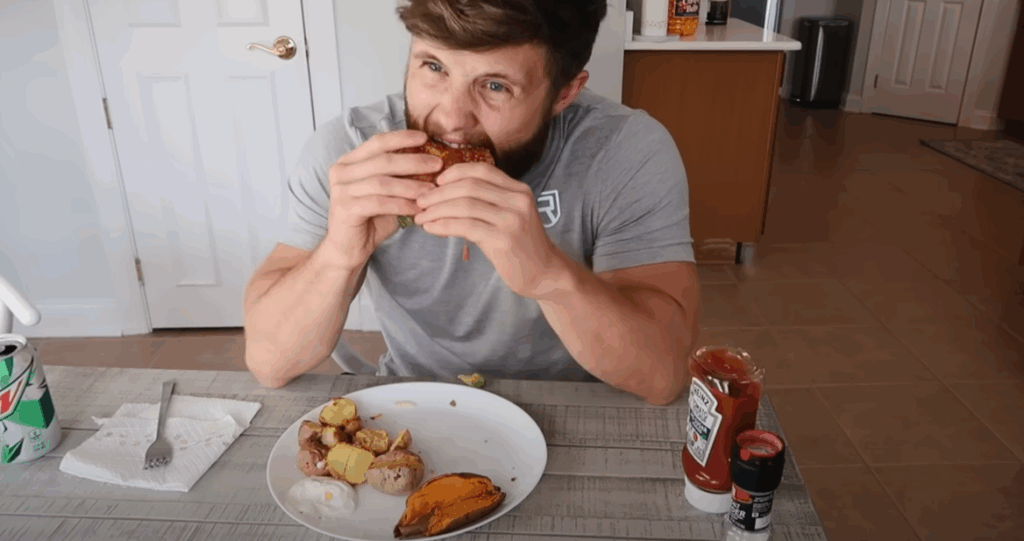Inside a 5,000-Calorie Intuitive Eating Challenge: A Deep Dive into the “All-In” Approach
Reconnecting with one’s hunger cues after years of restrictive dieting can be one of the most difficult—and liberating—journeys a person undertakes. In a recent challenge, fitness coach Jeff decided to step into his partner Stephanie’s shoes by replicating her “all-in” eating routine from the early days of her recovery. This experiment wasn’t about gluttony or indulgence—it was a powerful attempt to understand extreme hunger and the mental shift required to regain balance with food.
So what exactly is the “all-in” approach, and how does it relate to health, hormones, and body image? Let’s unpack the science behind it, and explore what a 5,000-calorie day of intuitive eating actually looks like.

Understanding the “All-In” Mindset
Years of caloric restriction, whether for aesthetic goals or weight control, often lead to serious physical and psychological side effects—loss of menstrual function, low energy, disrupted hunger signals, and obsessive food thoughts. The all-in strategy is designed to reverse these issues by completely removing food rules and trusting the body to guide intake.
Stephanie’s recovery process was rooted in intuitive eating principles: eating when hungry, choosing what the body genuinely craves, and stopping when satisfied. The focus wasn’t on portion control or macro tracking—it was about rebuilding trust in her body after years of deprivation. Inspired by this, Jeff took on the challenge to follow her early all-in food journal—no calorie cap, no restriction, just eating to satiety.
Meal One: A Mountain of Oats
To kick off the day, Jeff recreated one of Stephanie’s staple breakfasts: a double serving of thick-cut Trader Joe’s oatmeal, topped with banana slices and a crunchy layer of cinnamon protein cereal. The dish was filling, hearty, and nutrient-dense—a far cry from the typical low-calorie fitness breakfasts many are used to.
Despite not being a morning eater, Jeff quickly discovered the power of slow-digesting carbs and volume-based meals. Within a few bites, he already felt a rising fullness—an experience that mirrored Stephanie’s early days of eating more than she was used to.

The Science of Hunger Restoration
Extreme hunger after chronic dieting isn’t just “mental weakness.” It’s a biological rebound. When your body’s been in a prolonged energy deficit, it responds by amplifying appetite hormones and dampening satiety cues. That’s why those recovering from diet culture often find themselves ravenous.
Studies, such as those referenced in the book No Period, Now What? by Dr. Nicola Rinaldi, suggest that restoring hormonal balance—especially menstrual function in women—requires a sustained calorie surplus, often above 2,500 calories per day. Stephanie followed a similar path, focusing on high-energy whole foods and avoiding calorie tracking entirely.
Meal Two: Veggie Burgers and Carbs Galore
Later in the day, Jeff prepared a plant-based lunch featuring two veggie patties stacked with cheese, avocado, and condiments on a bed of greens, paired with both baby potatoes and a small sweet potato. This combination of starches, fats, and plant protein delivered more than just calories—it was satisfying, rich, and grounded in nutrient density.
For Jeff, this meal felt like a turning point. It wasn’t overwhelming or excessive—it felt like a strong pre-workout fuel-up. The surprise? The potatoes, while high in volume, weren’t as tough to finish as he expected. The lesson: real whole foods can be both filling and nourishing.
Post-Workout Fuel: Cereal and a Donut
After his arm-day training session, Jeff followed the intuitive recovery formula with a sweet treat and a fast-digesting carb boost. A raspberry-filled Krispy Kreme donut—Stephanie’s former favorite—and a bowl of high-protein cereal with almond milk made up the next round of eats.
This wasn’t about “earning” food or “cheating” on a diet. It was about responding to depleted glycogen and respecting post-workout hunger. Jeff noted how even a single donut, once feared or forbidden in diet culture, could be enjoyed without guilt when viewed through an intuitive lens.

Dinner: Pasta and Mozzarella Sticks
As the evening rolled in, the meals kept coming. Dinner featured a hefty serving of rotini pasta with ground turkey and tomato sauce, rounded out with air-fried mozzarella sticks dipped in marinara. This meal pushed Jeff past his comfort zone—not because of the flavors, but due to sheer volume.
By this point in the challenge, he began to understand what Stephanie meant by digestion struggles. Eating whole foods in large quantities is no joke. Though the meal tasted great, it was the most difficult to finish so far. That said, feeling full didn’t mean failure—it meant that the body was finally being fed.
Final Stretch: Sushi, Fruit, and Ice Cream
To cap off the evening, Jeff and Stephanie shared several sushi rolls—California, spicy tuna, and a specialty roll topped with crunchy eel sauce. Despite feeling stuffed earlier, Jeff’s appetite returned slightly after some downtime. This highlighted how natural fluctuations in hunger can still occur, even on high-calorie days.
The final course was a small fruit bowl (including watermelon, banana, and kiwi), a few Oreos, and two scoops of Oreo-Chips Ahoy Breyer’s ice cream. Altogether, this last round nudged Jeff just over the 5,000-calorie mark.
Lessons from the Challenge
Jeff’s biggest takeaway? Eating 5,000 calories isn’t as easy as people think—especially when you’re prioritizing whole foods. Satiety hits hard when meals include fiber-rich carbs, lean proteins, and healthy fats. He also realized how calorie-dense processed foods like donuts and ice cream helped balance the day, especially when fullness made it hard to keep eating.
Perhaps more importantly, this experiment gave Jeff new appreciation for the psychological work involved in recovery. Stephanie’s decision to let go of control and trust her body again wasn’t just about food—it was about healing.
The Bottom Line
The all-in approach isn’t about bingeing or excess. It’s a structured method to reestablish a healthy relationship with food, recover from metabolic adaptation, and restore physical and emotional well-being. It’s not for everyone, and medical guidance is recommended—especially for individuals with complex histories of disordered eating.
However, this challenge proved one thing for sure: letting go of restriction, eating freely, and listening to your body is not only liberating—it’s essential for long-term health.



